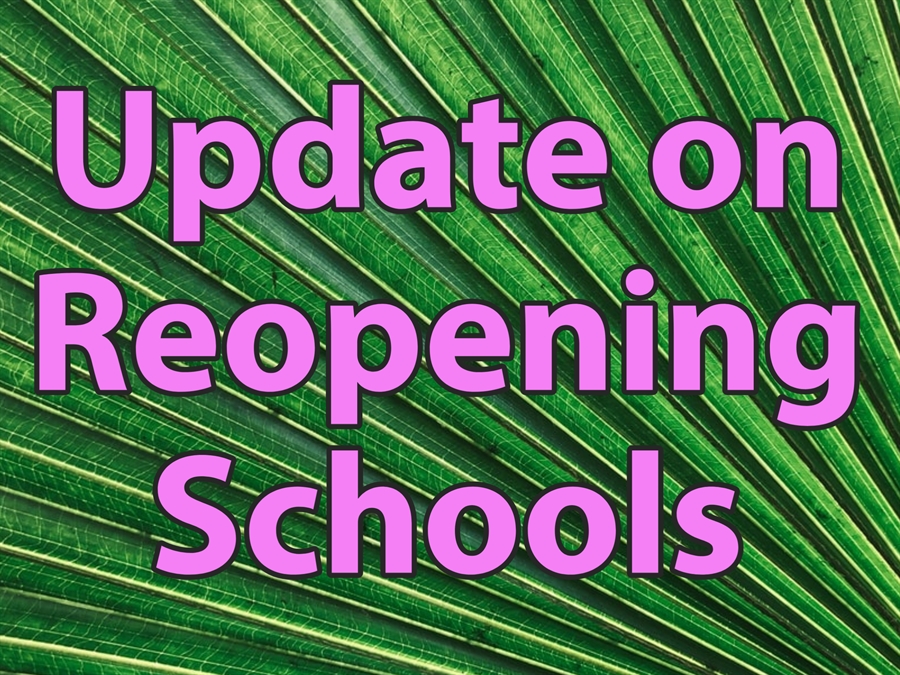
Today, new guidance was issued by the state for in-person learning.
As part of its planned guidance and metrics review process, the Oregon Department of Education (ODE)’s update to the Ready Schools, Safe Learners guidance, includes updated metrics for returning to in-person instruction. The metrics are based on the latest COVID-19 studies and data, align to CDC recommendations, are in line with standards in other states, and help Oregon meet its priority to return students to in-person instruction.
Since Oregon’s metrics were originally issued in August, more data has become available from school districts across the country. ODE worked with the Oregon Health Authority to establish when students can return to the classroom while still mitigating the risk of COVID-19 spread.
A key lesson from the review of national school data is that Oregon school districts can help protect student and staff health and well-being during in-person instruction when community spread is sufficiently low and when school districts strictly adhere to the health and safety protocols now in place in Oregon.
“We have done a lot of work to plan for the safe reopening of schools, and we will continue to put first the safety of our children, staff and community as we approach the time when we can bring some of our students back to the classroom,” said Dr. Maryalice Russell, superintendent of McMinnville School District. “While we’re looking forward to in-person learning, we want to caution that the new guidance does not recommend immediate opening of schools.”
Key changes to the metrics include:
A clear set of reachable targets for communities to strive for, with a goal of returning Oregon students to in-person instruction.
Acknowledgement that Oregon’s Ready Schools, Safe Learners guidance’s strong public health protocols in structured settings like schools, can greatly reduce the risk of transmission of COVID-19.
Additional time for schools to transition between in-person and distance learning models.
Increased access to in-person instruction at the elementary level.
A two-week “Look Back” at the Metrics Data rather than one week at a time over a three-week period.
Removes State Positivity Rate in favor of county positivity rates.
ODE and the Oregon Health Authority (OHA) were among the very first states to create metrics for returning to in-person instruction in early August. At that time the metrics were based in large part on successes seen in other countries, as school was not in session in the U.S. Later, exceptions were added to make a return to in-person instruction possible for more students, where there was lower risk of COVID-19 transmission.
When the metrics were first released, further review was announced, and now with additional studies and data on-hand the metrics are being revised to permit more in-person instruction while continuing to ensure that local conditions guide the process. As we learn more about the progression of COVID-19 in Oregon, the effectiveness of future vaccines and other mitigation efforts, and gain more information about the transmission of COVID-19 in structured settings like schools, ODE and OHA are committed to reviewing the metrics again in the coming weeks.
The metrics updates take effect immediately and, based on this week’s data points, potentially allow close to 130,000 students to return to some in-person instruction. The guidance recommends that schools consider both equity and a methodical and cautious approach at the beginning that return a portion of the school population first and then add more students on-site over time. This will allow schools to build new safety routines, stabilize cohorts, and avoid sudden, disruptive transitions back to Comprehensive Distance Learning due to quarantine or isolation.
Safety Reminders
Schools are structured settings where we can reduce risk of COVID-19 transmission through key practices. Oregon’s Ready Schools, Safe Learners guidance requires schools to comply with specific guidelines on:
Physical distancing
Face coverings
Hand hygiene
Cohorting
Cleaning and disinfecting
Airflow and ventilation
And, effective screening, and responses to cases with quick access to testing and implementing isolation and quarantining
“These metrics depend on the public doing its part to reduce Oregon’s case rates so that all of our children can return to in-person instruction,” ODE Director Colt Gill said. “Oregonians can reduce spread and send our kids back to school by wearing a face covering, maintaining distance, washing hands frequently, and avoiding group gatherings.”
Oct. 30, 2020